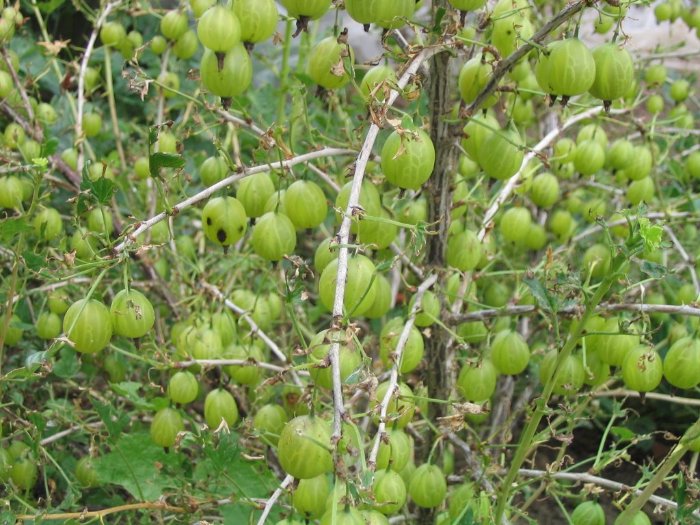 Having discovered that the gooseberry bush has completely lost its leaves, but retained the berries on the branches, an experienced gardener will immediately identify the pest. Such plant damage is characteristic of the sawfly caterpillar. Gooseberries can be attacked by two species of insect - yellow and pale-legged.
Having discovered that the gooseberry bush has completely lost its leaves, but retained the berries on the branches, an experienced gardener will immediately identify the pest. Such plant damage is characteristic of the sawfly caterpillar. Gooseberries can be attacked by two species of insect - yellow and pale-legged.
Content
Pest Description
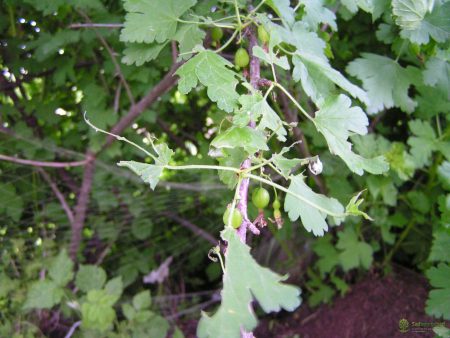 Adults sawfly - small midges with two pairs of transparent wings. The yellow sawfly has a red-yellow color and a body length of up to 8 mm, the pale-legged sawfly is black with light legs, 5-6 mm in length.
Adults sawfly - small midges with two pairs of transparent wings. The yellow sawfly has a red-yellow color and a body length of up to 8 mm, the pale-legged sawfly is black with light legs, 5-6 mm in length.
Departure of sawflies coincides in time with the growth of leaves and budding of gooseberries. Insects lay eggs on the underside of the leaf along the veins. Caterpillars of the yellow sawfly, emerging from eggs after 7-14 days, differ in gray-green or blue-green color. The yellow-green larvae of the pale-footed sawfly appear 6-10 days after laying.
Caterpillars feed on leaves, gaining weight. After about a month, the pest is ready for pupation, for which it moves to the soil to a depth of 5-10 cm, where they wrap themselves in a cocoon. If the temperature is high enough, pupation begins, if the caterpillar goes into the ground before winter, pupation occurs only in spring. In summer, the conditions are more favorable, so 2-3 weeks after the departure of the caterpillars, the second flight of midges begins, ready for mating and laying eggs. In the spring, the chrysalis will take about a month to do this. The second generation of larvae is more numerous and appears by the time the fruit ripens.
Symptoms and prognosis for gooseberries
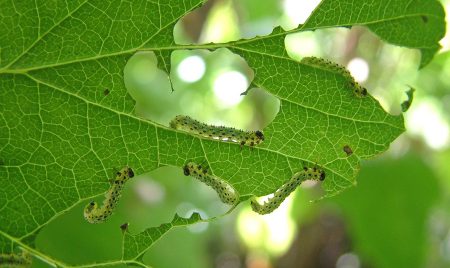 Symptoms and consequences of gooseberry damage are the same in both types of sawfly. In the initial stage on the leaves you can see holes eaten by caterpillars. Gradually, the pest eats up the entire leaf plate between the veins. The berries of the sawfly caterpillar are not interested. Bare branches without growth of shoots and fruits - that is what remains on the bush after the invasion of an insect.
Symptoms and consequences of gooseberry damage are the same in both types of sawfly. In the initial stage on the leaves you can see holes eaten by caterpillars. Gradually, the pest eats up the entire leaf plate between the veins. The berries of the sawfly caterpillar are not interested. Bare branches without growth of shoots and fruits - that is what remains on the bush after the invasion of an insect.
Sawfly is a pest dangerous for gooseberries. A bush attacked by second-generation caterpillars can lose its crown almost completely in a week. Without leaves, the normal course of photosynthesis processes and, as a result, the nutrition of the bush, including fruits, is impossible. Berries grow small and showered from the branches, not reaching ripeness.
Bushes damaged by the sawfly caterpillar, in addition to getting rid of the pest, require intensive care: additional fertilizing with organic fertilizers, treatments with immunostimulants and thorough preparation for the winter period.
The loss of leaves not only negatively affects productivity, but also weakens the bush, depriving it of immunity to diseases, winter tolerance, and does not make it possible to bookmark growth and fruit buds. As a result, the growth and yield on the gooseberry bush are absent in the next year. Often the affected plant does not survive the winter.
Fighting the sawfly
Removing the pest and the consequences of its attack will require a series of actions over several months. Treatment should begin with an examination of the gooseberry bushes to determine whether it makes sense to preserve the current year’s crop.
If more than half of the deciduous cover is left on the bush, you can try to reduce the number of caterpillars using biological products, herbal remedies and mechanical methods of control.If the gooseberry has lost most of the leaves, you should abandon the struggle for the crop and, regardless of the vegetative phase of the plant, take chemical treatments to quickly suppress the spread of the pest.
Subsequently, the general treatment regimen is used.
Autumn activities
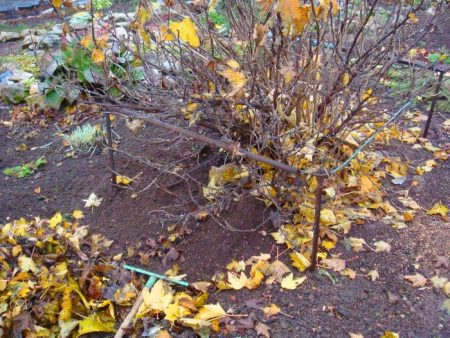 Before winter, it is necessary to carry out a thorough cleaning in the garden - to collect fallen leaves and crop residues, cut branches, dig up the soil under the bushes. Digging is best done on the eve of frost, its task is to raise caterpillars that have settled for wintering in the upper layers of the soil, reducing the number of adults in the spring. The yellow sawfly hides at a depth of 5-7 cm, the lowest level is 10 cm. The pale-legged sawfly can take refuge 2-5 cm from the ground level. It is necessary to turn the layers of the earth so that the pests are on the surface and freeze.
Before winter, it is necessary to carry out a thorough cleaning in the garden - to collect fallen leaves and crop residues, cut branches, dig up the soil under the bushes. Digging is best done on the eve of frost, its task is to raise caterpillars that have settled for wintering in the upper layers of the soil, reducing the number of adults in the spring. The yellow sawfly hides at a depth of 5-7 cm, the lowest level is 10 cm. The pale-legged sawfly can take refuge 2-5 cm from the ground level. It is necessary to turn the layers of the earth so that the pests are on the surface and freeze.
Spring fight
In early spring, you can "finish off" the surviving pupae by pouring boiling water over the trunk of a bush. The procedure must be carried out when the soil has already managed to warm up a little, but the movement of plant juices has not yet begun.
The soil should be loosened and covered with a film to create a barrier for adult insects when they try to fly out. Remaining on the surface of the soil, midges will die. You can also reduce the number of adults with the help of baits. To do this, lubricate with viscous liquid (petroleum jelly, vegetable oil, not drying glue) pieces of cardboard, painted in shades attractive to the insect - yellow or orange. You can take advantage of the fact that midges repel strong odors: it is enough to place cans with tar, turpentine or diesel fuel between the bushes to scare away the pests.
An effective remedy for pupating caterpillars is to plant in the soil when loosening the soil a powder of ash, ground hot pepper and dry mustard. The mixture is prepared based on a tablespoon of mustard and pepper for every 500 g of ash.
During the budding period, the bushes must be treated with chemical insecticides.
Summer care
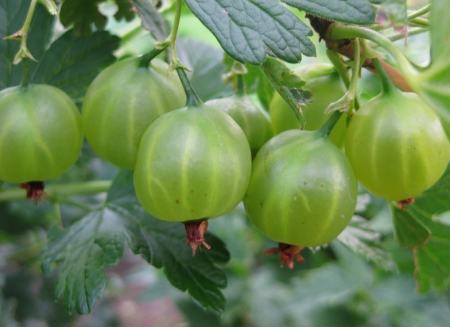 Chemical treatment is carried out again after flowering. Spraying can be repeated after harvesting the berries. In the period from the formation of the ovaries to the time of harvesting, it is recommended to make a few more treatments with safe folk remedies and bioinsecticides.
Chemical treatment is carried out again after flowering. Spraying can be repeated after harvesting the berries. In the period from the formation of the ovaries to the time of harvesting, it is recommended to make a few more treatments with safe folk remedies and bioinsecticides.
Bushes should be inspected periodically, removing the affected leaves and small, unusable berries. Caterpillars must be shaken off the branches on a film spread under the bush and destroyed. Procedures are carried out throughout the season until the leaves fall.
Effective remedies against the sawfly
Organophosphorus compounds and peritroids of the intestinal and contact mode of action, as well as biological pesticides, are effective for treating bushes against the sawfly caterpillar. Less effective, more suitable for preventive measures, folk remedies. These are decoctions of “bitter” herbs and plants (substances) with a strong aroma.
Chemicals
During vegetation periods, when insecticide treatments are acceptable, gooseberries should be sprayed with the following preparations:
- "Fufanon";
- Kinmix
- Inta-Vir;
- Arrivo
- "Spark";
- "Karate";
- Decis Profi.
To destroy adult insects, it is effective to process Trichloromethaphosome-3 bushes during the summer period of midges (a 0.2% solution is bred). The tool is also suitable for controlling first-generation caterpillars (it can be used during budding or immediately after flowering). For treatment against caterpillars, the drug is diluted in water to obtain a 1% solution.
Biological products
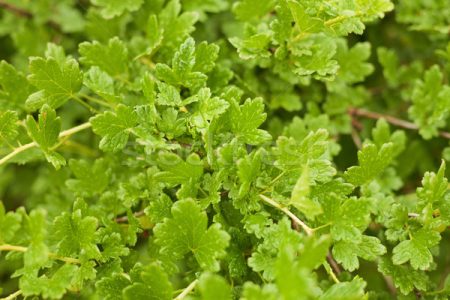 If urgent treatment is necessary, when chemicals are banned, bioinsecticides are used.These drugs can be used at any stage of the gooseberry vegetation, including flowering. Harvest after spraying can be harvested after 5 days.
If urgent treatment is necessary, when chemicals are banned, bioinsecticides are used.These drugs can be used at any stage of the gooseberry vegetation, including flowering. Harvest after spraying can be harvested after 5 days.
Against the sawfly are recommended:
- “Bitoxibacillin” - 80-100 g / 10 l;
- "Dendrobacillin" - 30-50 g / 10 l;
- “Lepidocide” - 30 g / 10 l.
2 sprayings are allowed with an interval of 7-8 days.
Folk recipes
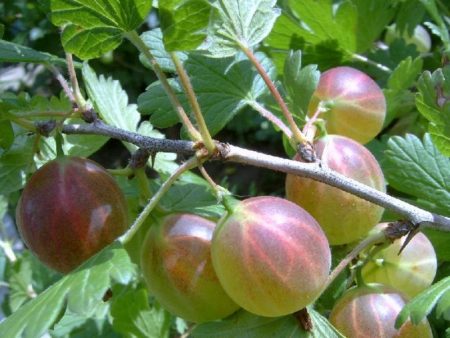 Folk remedies should be used at the beginning of the defeat, when there are not many midges and caterpillars. The effect will give 3 treatments with weekly pauses.
Folk remedies should be used at the beginning of the defeat, when there are not many midges and caterpillars. The effect will give 3 treatments with weekly pauses.
The most effective:
- Tomato Tops. A bucket of water will require 1/2 kg of fresh tops or 40 g of dry. Chopped raw materials should be insisted in water a day. The finished solution must be filtered and diluted with 3 parts of water immediately before use.
- Tansy. Fresh parts of the plant, with the exception of the roots, are cut, 1 kg is poured with a bucket of water and boiled for about 2 hours. After cooling, filter.
- Needles extract. The tool can be purchased at the pharmacy. In a bucket of water, add 4 tablespoons of the drug. Prepare before use.
The tar treatment of the bushes is effective: 30 g of resin must be dissolved in a bucket of water. But spraying should be done strictly before the buds open.
- Tobacco. Leaves or powder are used against the sawfly. In both cases, 1 kg of raw material is required per bucket of water. The leaves are cut and poured with warm water, tobacco dust - warm or cold. Insist should be a day.
- Mustard. 100 g of powder must be infused for 2 days in 10 liters of water. The finished infusion must be diluted with water in a ratio of 1: 2.
- Red chillies. A bucket of water requires 1 kg of fresh fruit. Pre-chopped pepper is poured with boiling water, boiled for 5 minutes. The product is allowed to infuse during cooling, filtered and used.
- Chamomile. The flowers and leaves of the pharmaceutical chamomile are crushed, filled with hot water (60-65 ° C). Take 1 kg of raw material per bucket. After half a day of infusion, the solution is filtered and 10 more liters of water are added to it.
- Yarrow. For 10 liters, 700 g of dry or 400 g of fresh leaves and stems of the plant are needed. Chopped greens are poured with boiling water, let it brew for 3 days.
- Wood ash. A bucket of hot water needs to be poured 3 kg of ash. After 48 hours, the infusion should be filtered and sprayed. Wood ash can be used in dry form for dusting bushes during the summer season of midges (consumption - 1 kg per 2 bushes). It is recommended to carry out this procedure in the early morning when the gooseberry leaves are wet from dew.
In all infusions and decoctions, it is useful to dissolve 40 g of soap chips (per bucket). This will extend the period during which the product lasts on the leaves, in addition, the caterpillars do not like soap.
Prevention
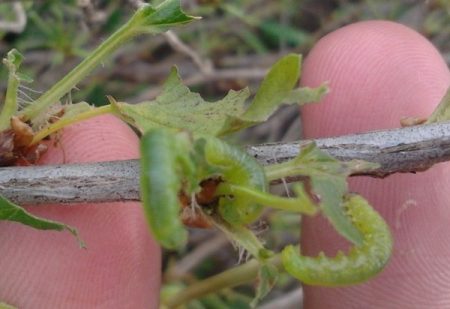 To prevent the serious consequences of pest damage, regular inspection of the bushes is necessary. Do not forget about the back of the leaves, where eggs and young larvae of the sawfly can be located, as well as other pests.
To prevent the serious consequences of pest damage, regular inspection of the bushes is necessary. Do not forget about the back of the leaves, where eggs and young larvae of the sawfly can be located, as well as other pests.
- An elderberry bush can scare away an adult sawfly from the site, as well as planting tomatoes, mint or tansy near the gooseberry. A number of herbs are recommended to be placed between every 6 bushes.
- Types of sawfly affecting gooseberries are also dangerous for currants (red and black). Planting these crops nearby is not recommended.
- Autumn harvesting is important, especially digging the soil to destroy the larvae.
- Two to three times per season it is useful to spray planting with herbal infusions and decoctions. The best remedies are tomato tops and tansy. But since it is advisable to provide protection against several types of pests at once, it is worthwhile to dwell on more universal means - wood ash, mustard and tobacco extracts.
Also, you should pay attention to gooseberry varieties that are highly resistant to sawfly damage:
- "Commander";
- "Northern Captain";
- "Harlequin";
- "Favorite";
- "Ural Emerald";
- "Chelyabinsk green";
- "Cooperator";
- "Malachite";
- "Consul".
The pest has natural enemies that you can try to attract to the site. These are tits and blue tit.
Reviews and Tips
Lydia, 45 years old:
“A wormwood infusion helped me against the caterpillars. I took 1.5 kg of grass on a bucket of water, insisted 10 days. The main secret - cut wormwood should be allowed to lie down before pouring water on it. 2-3 hours will be enough. Leaves should become slightly “lethargic”. The second secret is to add 100 g of soda (kitchen) to the finished infusion. Great remedy. If aconite grows on the site, you can try to prepare another good infusion. For each bucket of water, you need somewhere a kilogram of grass, it is better to cut plants during flowering. Insist 2 days. "
Tatyana, 36 years old:
“Since my elderberry does not grow on my site, and the sawfly moths curled around gooseberries this summer, I tried to break elderberry branches and place them in banks of water right between the bushes. From time to time, the water itself changed the branches. This also works. ”
Lyudmila, 44 years old:
“I share the recipe for a remedy that replaced my needles extract. More precisely, now I do it myself. I fill a bucket of water with about 2 kg of pine needles and leave for a week. It is important not to put it in the sun, it is better indoors, in a dark corner. Then I filter. Needles are a powerful tool, so I dilute the infusion before spraying. Sometimes three, sometimes if you insist longer, five parts of water. "
In warmer years, up to 3-4 generations of caterpillars can catch in the middle lane. Therefore, the fight against insects, if they appeared on the site, you need to start immediately and continue for 2-3 years, even if the lesion is already imperceptible.

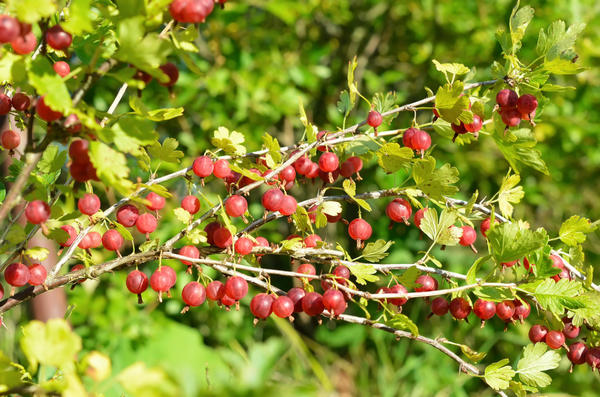

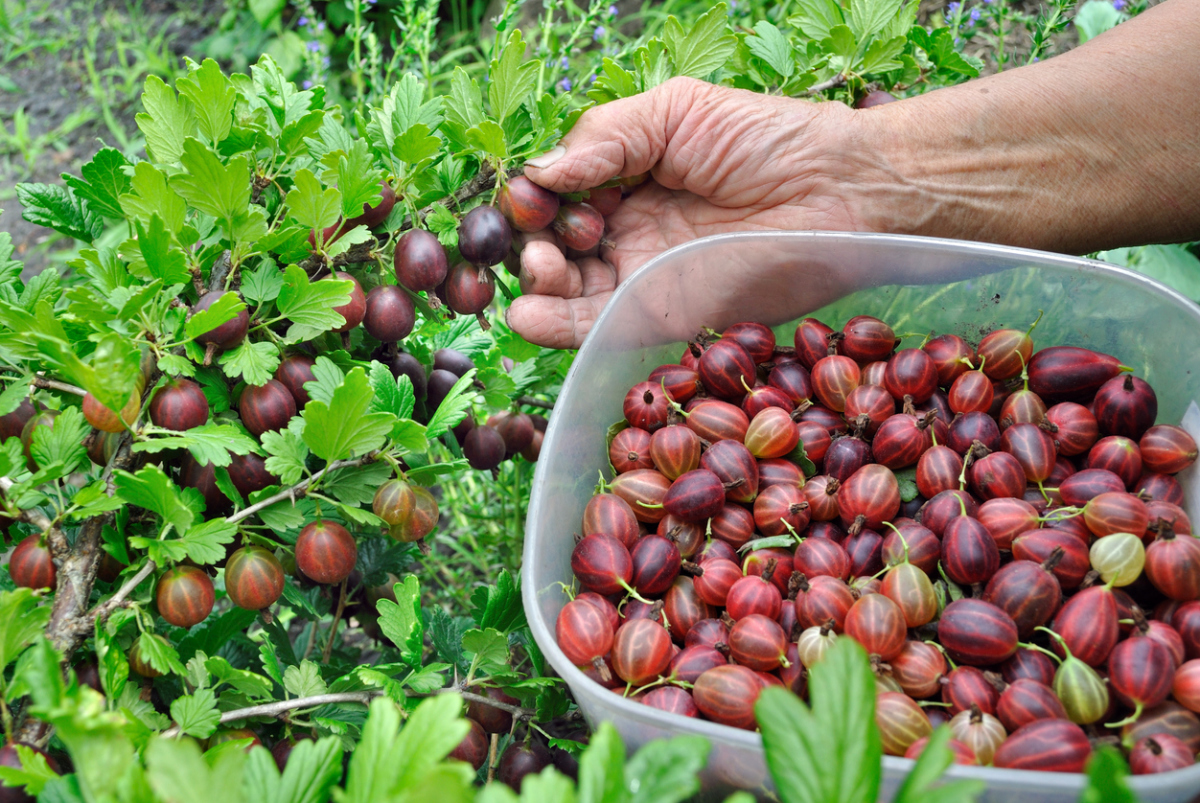
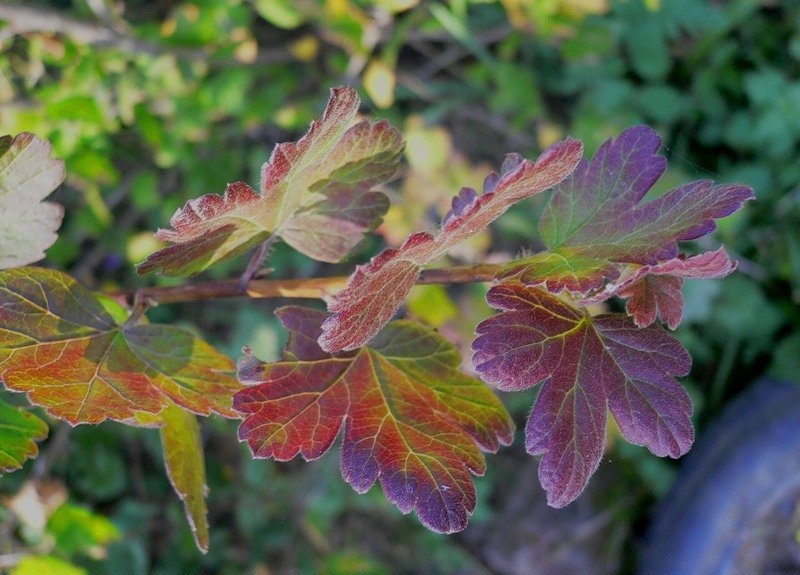 What does the red border on gooseberry leaves mean and what needs to be done
What does the red border on gooseberry leaves mean and what needs to be done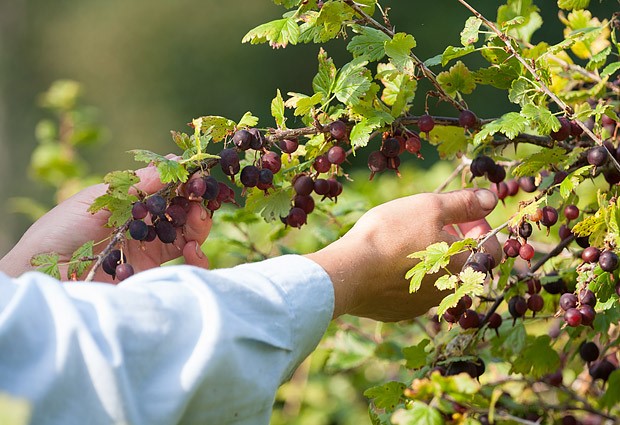 That's the end of summer, it's time to feed gooseberries after harvest
That's the end of summer, it's time to feed gooseberries after harvest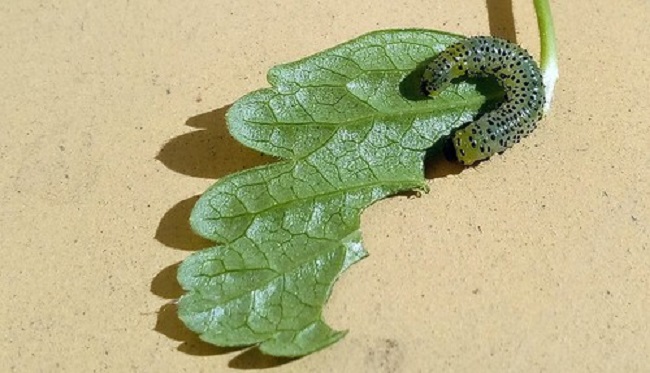 To save gooseberries from the invasion of caterpillars will help vinegar, mustard and ammonia
To save gooseberries from the invasion of caterpillars will help vinegar, mustard and ammonia